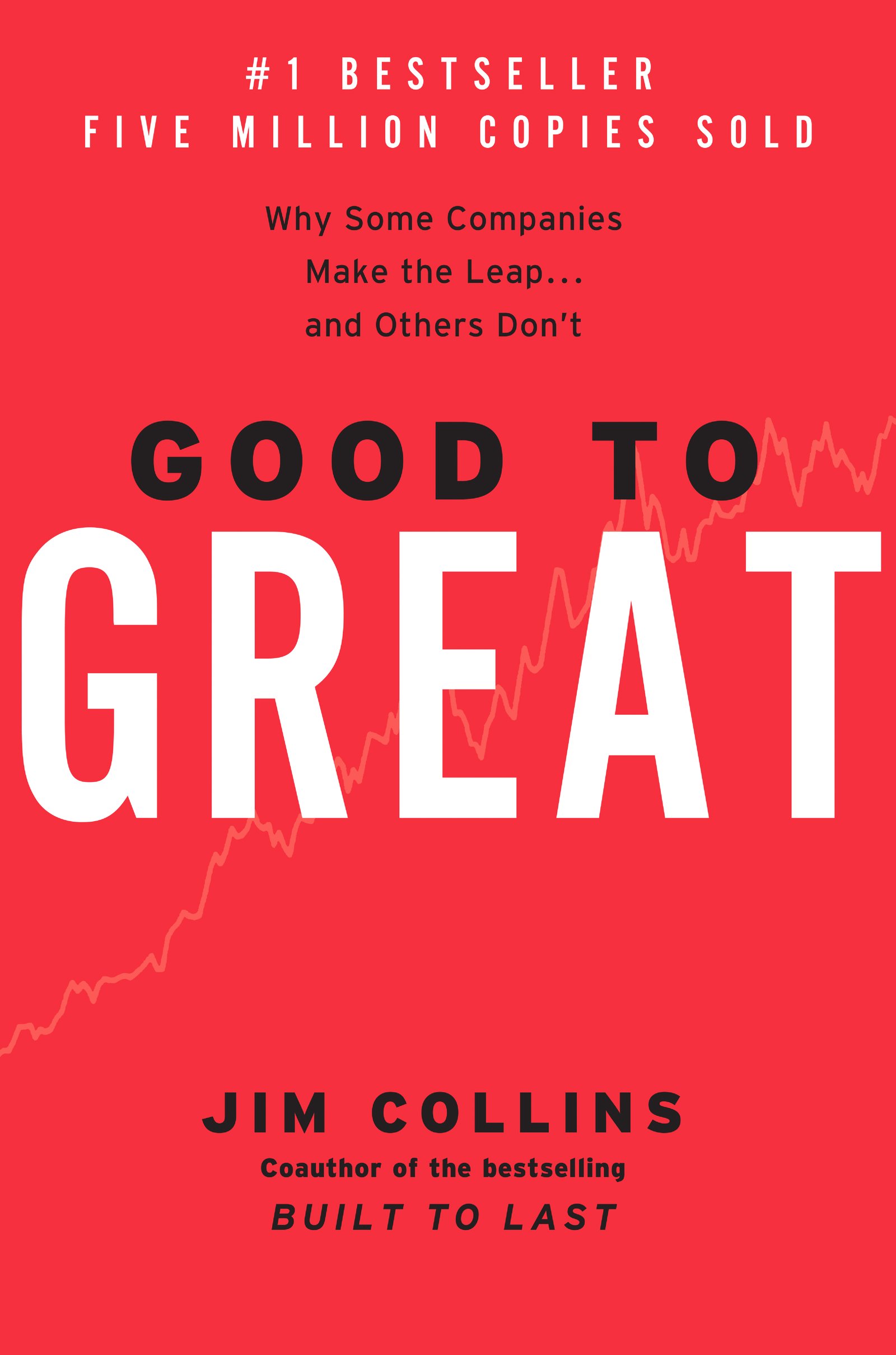Good to Great: How to Transform Your Business and Scale 10X
Good to Great: How to Transform Your Business and Scale 10X

Many businesses achieve moderate success, but only a few make the leap from good to great. In Good to Great, Jim Collins identifies key principles that separate long-term, highly successful companies from the rest. If you want to grow your business 5–10X, you must move beyond just being “good enough” and build a company with the right foundation for sustained, scalable growth.
Here’s how to apply Collins’ Good to Great framework to take your business to the next level.
1. Level 5 Leadership—Lead with Humility and Determination
Collins discovered that truly great companies are led by Level 5 Leaders—leaders who combine humility with fierce resolve to succeed.
How to develop Level 5 leadership:
-
Take extreme ownership—success or failure starts with you.
-
Put the company first—ego-driven leaders chase personal success; great leaders prioritize the business.
-
Give credit, take blame—recognize team contributions, but own the failures.
Ask yourself: Am I leading with humility and discipline, or am I letting ego and short-term thinking get in the way?
2. First Who, Then What—Get the Right People on the Bus
Great companies don’t start with a vision and then find people to execute it. Instead, they first hire the right people—then figure out the best strategy together.
How to apply this:
-
Hire top talent before defining big growth plans.
-
Remove underperformers or toxic employees—even if they are skilled, they will hold the company back.
-
Put people in the right seats—hire for strengths, not just job descriptions.
If you have the right people, they will help drive the business forward no matter the challenges.
3. Confront the Brutal Facts (Yet Never Lose Faith)
Great businesses face reality, even when it’s tough. They don’t sugarcoat challenges or rely on false optimism.
How to apply this:
-
Look at your numbers honestly—where is your business struggling?
-
Gather unfiltered feedback from employees, customers, and data—what’s working, what’s not?
-
Address weaknesses head-on—but maintain confidence that you will find solutions.
The key is to be ruthlessly honest about your business, while maintaining unwavering belief in your ability to grow.
4. The Hedgehog Concept—Find What You Can Be the Best At
Collins’ research found that great companies focus only on what they can be truly excellent at. They avoid distractions and stick to their core strength.
To find your Hedgehog Concept, ask:
-
What are we deeply passionate about? – What excites us?
-
What can we be the best in the world at? – Where can we dominate?
-
What drives our economic engine? – What is our most profitable activity?
Your sweet spot lies at the intersection of these three. Once you find it, focus all efforts there.
5. A Culture of Discipline—Create Systems That Drive Execution
Great companies have a culture where disciplined people take disciplined action without constant supervision.
How to apply this:
-
Set clear, simple rules for success—everyone must follow them.
-
Avoid bureaucracy—processes should enable growth, not slow things down.
-
Hold everyone accountable—but ensure they have the autonomy to execute.
When discipline is built into your hiring, processes, and decision-making, your business scales without micromanagement.
6. The Flywheel Effect—Consistent Effort Leads to Massive Momentum
Big breakthroughs don’t happen overnight. Great companies build momentum by pushing the flywheel—small, consistent actions that add up over time.
How to apply this:
-
Don’t chase quick wins—focus on long-term growth strategies.
-
Stay consistent—if something works, keep doing it instead of constantly shifting strategies.
-
Trust the process—momentum builds slowly, but when it catches, growth accelerates.
Many businesses fail because they give up right before the breakthrough—stay the course.
7. Technology as an Accelerator, Not a Solution
Collins found that technology alone doesn’t create greatness—but great companies use it to enhance their strategy.
How to apply this:
-
Use technology to scale what’s already working, not as a shortcut.
-
Invest in automation and efficiency, but ensure it aligns with your core strengths.
-
Avoid tech distractions—just because a new tool is trendy doesn’t mean it fits your business.
Technology should amplify your Hedgehog Concept, not distract from it.
8. Preserve the Core, Stimulate Progress—Evolve Without Losing Your Identity
Great businesses stay true to their values while continuously adapting to the market.
How to apply this:
-
Identify your core values—the non-negotiables that define your business.
-
Stay flexible in execution—markets change, but your mission should remain strong.
-
Encourage innovation—but never at the cost of your business identity.
The best companies balance tradition and change, ensuring longevity.
Final Thought: From Good to Great Requires Leadership and Focus
Most businesses stay good because they lack the discipline, strategy, and leadership to become great. If you want to 10X your business, apply Collins’ principles:
✅ Lead with humility and accountability
✅ Hire the best people before setting strategy
✅ Be brutally honest about challenges
✅ Find your Hedgehog Concept and focus on it
✅ Build a disciplined culture that executes consistently
✅ Trust the Flywheel Effect—small efforts create unstoppable momentum
Greatness isn’t an accident—it’s a choice and a process.
Are you ready to take your business from good to great?

